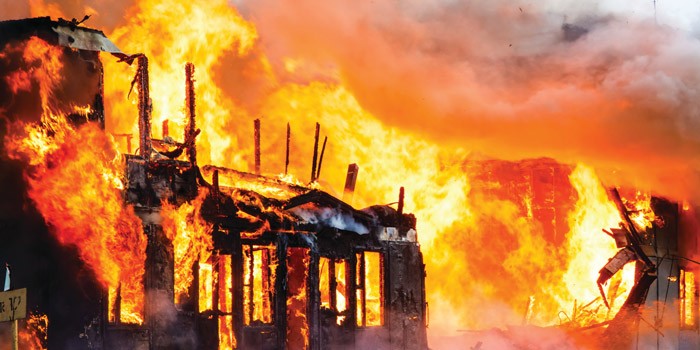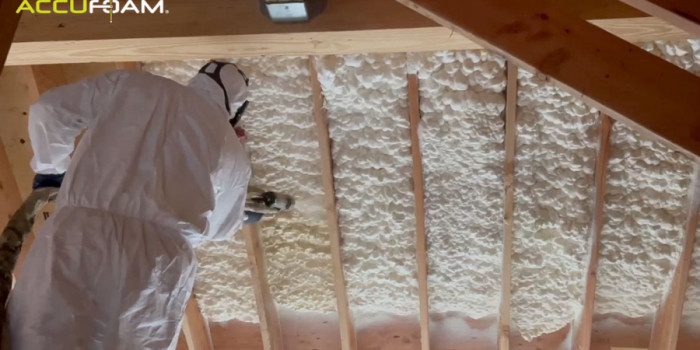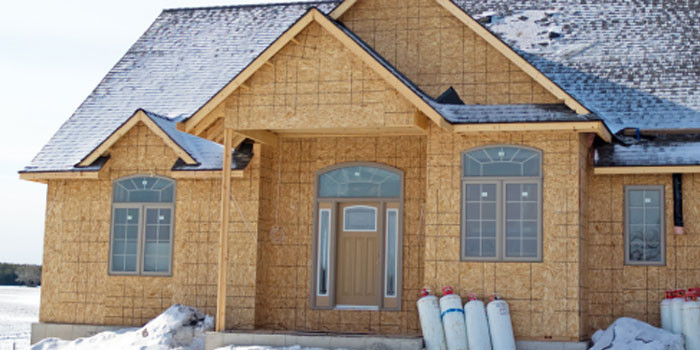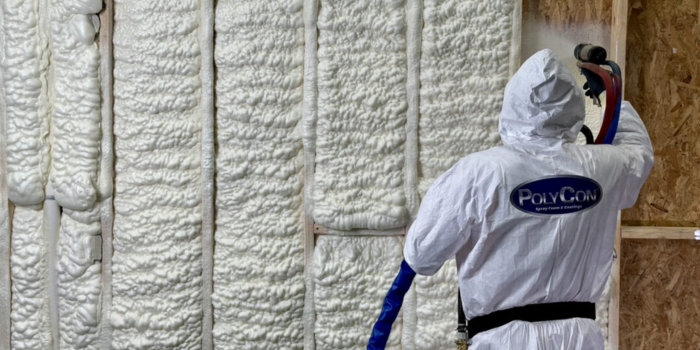Preventing Fires During Construction


HOUSTON, TX – January 29, 2018 – Fires during construction and remodel are all too common and costly, but the good news is most are preventable. Between 2010-2014, U.S. fire departments responded to an estimated average of 485,700 structure fires each year, resulting in estimated annual averages of 2,716 civilian deaths, 14,651 civilian injuries, and $9.7 billion in direct property damage. Of these structure fires, 3,750 were estimated to occur in structures under construction each year, while 2,560 occurred annually in structures undergoing a major renovation.
There were nine civilian (non-firefighter) deaths, 116 civilian injuries, and $208,000,000 annually in direct property damage from these fires during construction or renovation. The fatalities and injuries were tragic, the costs were staggering, and nearly all of these fires were preventable.
Leading factors contributing to the ignition of fires in structures under construction included:
- Heat sources too close to combustibles such as heaters and work lights
- Electrical failure or malfunction
- Abandoned or discarded materials or products such as SPF test buns
- Unattended equipment including cooking materials
- Cutting or welding too close to combustibles such as AC refrigerant lineset soldering
- Mechanical failure or malfunction
- Unclassified use of material or product such as closed-cell foam sprayed too thick
Having a fire extinguisher readily accessible is important and required by OSHA, but the best practice for fire control is to prevent the foam from burning by paying attention to safe use and handling and proper application of an ICC-ES Appendix X rated spray foam.
The spray foam industry developed the ICC-ES Appendix X fire performance standard for attic and crawlspace applications of SPF about a decade ago, and it has served us well. Appendix X rated spray foams and assemblies are hard to ignite, and if a fire does start, it propagates relatively slowly in order to allow anyone working in the vicinity of a fire to safely escape and to give firefighters a chance to extinguish an accidental fire. If using an intumescent coating for ignition-barrier protection, it should be applied as soon as possible after the foam is sprayed as the label allows a non-Appendix X rated foam should not be left unprotected. Most closed-cell foams and many open-cell foams are ICC-ES Appendix X rated without a coating and are therefore inherently safer than non-rated foams during construction.
There are some who advocate for non-Appendix X rated foams to be left exposed in attics where a specialized outward-opening attic hatch is used to contain a fire until the oxygen is depleted in the attic and the fire goes out. This assembly works best when the foam burns fast to deplete the oxygen quickly, which is counter to the intent of the Appendix X protocol as it allows less time for a worker soldering a pipe or a child playing with matches to escape. Due to the nature of the non-standard attic hatch and the typical construction process, SPF in these assemblies might not be protected for days, weeks, or months after installation. Many in the industry are very concerned about this, and as a spray foam contractor, you can choose to use a well-proven ICC-ES Appendix X foam product in standard construction instead.
As our crews apply spray foam in homes and buildings, we’re ever aware of the exothermic energy necessary to process the product. Closed-cell foam, if sprayed too thick or if not allowed to cool between lifts, can auto-ignite due to excessive exothermic energy. And, “alien foam” created when changing chemical from one product to another can catch fire, which has resulted in the total loss of houses, trucks, and trailers.
Using Appendix X rated open and closed-cell foams reduces the rate of ignition and slows combustion
In addition to fires started from exothermic energy, many house fires during construction and remodel are started by “hot work” such as welding, cutting and grinding, and by lighting or heaters placed too close to finished foam. Incandescent and halogen lights can be very dangerous in work zones and, thankfully, LED lights, which operate much cooler, are plummeting in price. Some LED lights can even be protected using plastic film and often last many times longer than the hot work lights of yesteryear.
As we adjust the methods and job site equipment to work in winter weather, we need to think about the heaters we use on the job site. The correct way to heat the air in the work zone is to use an indirect fired heater where the flue gases are directed outside the building and the heated air is directed inside. This type of heater expels the moisture created through combustion along with any products of combustion of the SPF aerosol that might be in the work zone air. Paying attention to the flue and discharge air is essential for fire safety, as is care during fueling and transporting the heater.
Another leading cause of fires during construction is cooking. Cooking equipment is involved in 1,240 fires and $11,000,000 in direct property damage annually. Crews need to take great care warming or cooking their meals and should never cook in the spray rig for a number of reasons. Microwave or hot-plate cooking lunch also cooks any chemical vapors in the air and whatever compounds are created could be absorbed into the food and consumed. Iso looks a lot like coffee and on at least one occasion was sipped by accident. Solvents or plasticizers improperly stored in water bottles could be mistakenly consumed. A hard and fast policy of NO FOOD IN THE RIG is imperative, and setting up a safe place for cooking is prudent for fire safety.

The correct way to heat the air in the work zone is to use an indirect fired heater where the flue gases are directed outside the building and the heated air is directed inside.
Smoking in homes and building under construction and remodel causes 400 fires annually, and an average of five civilians die in these smoking-related fires. The $8,000,000 in direct property damage is incidental compared to the tragic loss of life, and these fires are completely preventable. A fire-safe smoking station is easily established on the work site, and education of the increased danger of smoking while working with SPF chemicals should be a regular conversation in safety meetings. Chemicals of all sorts, including solvents and SPF A or B-side on the smoker’s fingers, could permeate cigarette paper and be burned and inhaled along with the tobacco smoke.
RELATED SES Foam Discusses Quality Control in Spray Polyurethane Foam Roofing Applications, SES Foam Reveals The Secrets of a Successful Spray Foam Contracting Business Sale, Profoam Discusses Benefits of Appendix X Approved Spray Polyurethane Foam
Use of non-Appendix X rated foam must be placarded with a warning to homeowners at the attic entrance after construction is complete. Additionally, a warning to other trades should be posted during construction, alerting them to the fire hazard of the non-rated foam they’re working around. If they accidentally start a fire in an attic with unprotected foam, they might have only seconds or minutes to escape. As the oxygen in the attic is depleted to smother the fire, the workman in the space will have less oxygen to breathe. This then causes brain cells to begin to die in seconds without adequate oxygen and cognitive function declines rapidly. High altitude pilots exposed to oxygen deficient environments have been shown to make very poor decisions, and similarly, a worker starved of oxygen might not be able to move himself to safety. Choosing to use Appendix X rated spray foam is the responsible approach, especially in attics, crawlspaces, and other confined areas of a home or building.
A firm company policy and frequent communication regarding fire safety help to prevent job site fires and provides a safer worksite for your crew. Well-placed fire extinguishers and instruction for their use might help for a small fire in the early stages, but fire prevention should be your primary focus.
Using Appendix X rated open and closed-cell foams reduce the rate of ignition and slow combustion, so if there is an accidental fire on the job site, your crew and other workers have a better chance to safely escape.•
Contact SES FOAM
Direct any questions about fire prevention during construction to SES Foam:
Phone: 855-335-2440 / 713-239-0252
Website: www.sesfoam.com
*Spray Foam Magazine does not take editorial positions on particular issues; individual contributions to the magazine express the opinions of discrete authors unless explicitly labeled or otherwise stated. The inclusion of a particular piece in the magazine does not mean that individual staff members or editors concur with the editorial positions represented therein.
Disqus website name not provided.










































